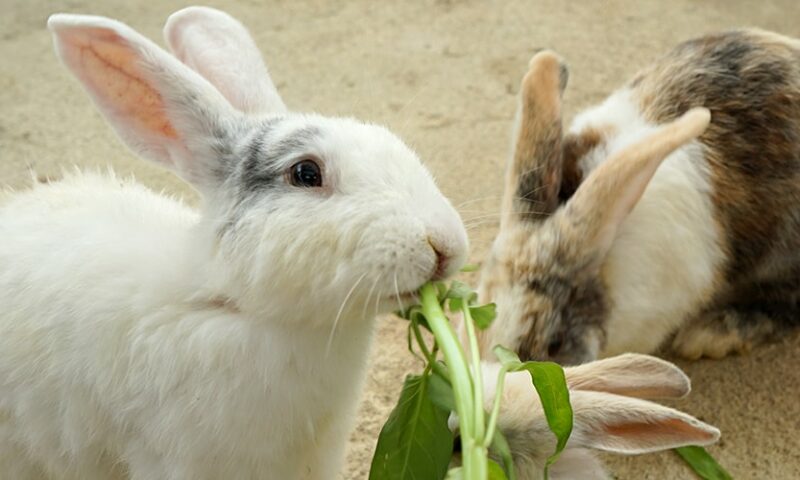By Spy Uganda
Kampala: Rabbits are herbivores (plant-eaters) and are considered grazers, in that they eat continuously. They have complex digestive systems and are very efficient at processing food. They also have very specific dietary needs. If you introduce new foods too quickly or feed inappropriate food choices, the rabbit’s normal digestive flora (normal bacteria) will be disturbed, gas-and toxin-producing bacteria can overgrow, and the rabbit may become very sick and possibly die.
So What Do Rabbits Eat?
Rabbits should have a daily diet of mostly hay, a smaller amount of fresh vegetables, and a limited number of pellets. Hay is the most important part of a rabbit’s daily intake. Unlimited, high-quality grass hay, such as Timothy, orchard or brome, should make up the bulk of a rabbit’s diet. Grass hay is high in fiber, which is critical to maintaining a rabbit’s healthy digestive tract. While young, growing rabbits can eat any type of grass hay, alfalfa hay is not recommended for adult rabbits, as it is too rich in protein and too high in calcium.
Timothy pellets can be offered at approximately 1/8-1/4 cup per 5 lbs (2.25 kg) of body weight. Over-feeding pellets to adult rabbits is a common cause of obesity and soft stool (caused by an overgrowth of abnormal bacteria in the gastrointestinal (GI) tract), as pellets are generally low in fiber and high in carbohydrates. In addition to hay, wild rabbits eat a lot of other fresh vegetation.
A pet rabbit’s diet should be supplemented with a variety of leafy green vegetables every day. Rabbits can consume as many vegetables as they want to each day as long as they do not get diarrhoea and as long as the vegetables are not high in carbohydrates, as carrots and potatoes are. Variety is important. Introduce new vegetables slowly and in small quantities, and monitor for soft faeces, diarrhoea, or signs of gas pain.
Particularly good vegetables include dark leafy greens like romaine lettuce, bok choy, mustard greens, carrot tops, cilantro, watercress, basil, kohlrabi, beet greens, broccoli greens, and cilantro.
Some leafy greens, such as collard and dandelion greens, parsley, kale, Swiss chard, and escarole, should be fed in limited quantities, as they are high in calcium and may contribute to the development of calcium-based bladder stones if fed in excess. Other acceptable vegetables include broccoli, green peppers, Brussel sprouts, endive, wheatgrass, radicchio, and squash. Iceberg or head lettuce should not be fed, as it is mainly water and contains few nutrients.
Carrots should be fed sparingly, as they are very high in carbohydrates and may upset GI bacterial flora. A small amount of many different vegetables is much better than a large amount of one food item.
Young rabbits, under approximately 7-8 months old, should be fed alfalfa pellets and alfalfa hay free-choice; they need the extra protein and calcium as they grow. They, too, can have a variety of vegetables. At approximately 7 months, they must be weaned onto an adult diet, as described above, since their growth slows down.
Also, note that Rabbits certainly can become overweight if fed an abundance of high-calorie treats. Cookies, nuts, seeds, grains, and bread should not be fed to rabbits. “Cookies, nuts, seeds, grains, and bread should not be fed to rabbits.”
Freshwater should be available 24 hours a day. Some rabbits prefer water bowls, and others prefer sipper bottles. If you offer water in a sipper bottle, be sure to inspect it for clogs and fill it with clean water daily. If you offer your rabbit water in a bowl, make sure the rabbit does not spill it in its cage or soil it with faeces.




